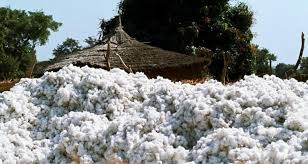Cottco to avail large chunk of Sesame inputs to Mash Central
Share

Bindura (New Ziana) -The Cotton Company of Zimbabwe (Cottco) will this farming season avail 40 percent of the national chunk of agricultural inputs to produce the Sesame crop to Mashonaland Central province due to its record of producing it.
Sesame, (Sesamum indicum), also called benne, is a flowering annual plant of the family Pedaliaceae, grown since antiquity for its seeds, which are used as food and flavouring and from which a prized oil is extracted.
Cottco national agronomist Collen Nyamenzi told New Ziana that out of the 200 metric tons that the company bought last year countrywide, 40 percent came from Mashonaland province.
“Mashonaland Central contributed 40 percent of the national yield last season. That is to say out of the 200 metric tons that we bought last year, 40 percent came from this province,” he said.
Widely cultivated, the sesame plant is found in most of the tropical, subtropical, and southern temperate areas of the world.
The aroma and taste of sesame seed are mild and nut-like while its chief constituent is its fixed oil, which usually amounts to about 44 to 60 percent.
Sesame oil is used as a salad oil or cooking oil, in shortening and margarine, and in the manufacture of soaps, pharmaceuticals, and lubricants.
The seeds are also high in protein and are rich in thiamin and vitamin B.
Sesame oil is used as an ingredient in cosmetics while the press cake remaining after the oil is expressed is highly nutritious.
The Zimbabwe government has set a target produce 100 000 tons of sesame crop during the 2020/21 summer farming season as it moves to boost production of export crops to increase foreign currency earnings.
The growing of sesame is also being promoted to increase feed-stock for cooking oil production and as an import substitution strategy.
Production of the crop is being targeted at cotton growers and spearheaded by Cottco, which has seen great potential in crop as an alternative cash crop.
Mashonaland Central, Manicaland and Masvingo have been the major producers of the crop.
In Mashonaland Central, the crop is grown mainly in the warm and dry regions of Muzarabani, Mbire, Mt Darwin and Rushinga.
New Ziana









